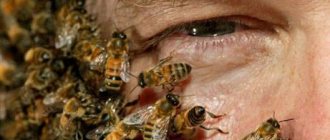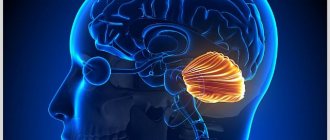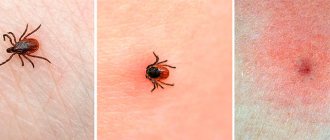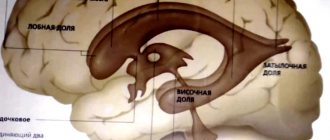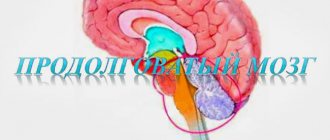The spine is a complex system consisting not only of bone tissue, but also of the delicate spinal cord trunk. It is thanks to him that a person is able to live a full life, feel the touch of objects, and distinguish them from each other. It consists of a huge number of nerve fibers and unique pathways along which impulses move. The anatomy of the spinal cord is distinguished by its high organization, since millions of signals coming from receptors in the periphery constantly pass through this organ.
Brief Definition
The spinal cord pathways or tracts are collections of nerve fibers located inside the spine that carry impulses from the brain to all parts of the body and back. The nerve endings, the combination of which form the pathways, are distinguished by a similar structure, development and general functions. They are divided among themselves according to the tasks assigned to them. The paths are classified as follows:
- Associative. Their main purpose is to unite gray matter cells from different segments to form their own anterior, lateral or posterior bundles.
- Commissural. These fibers connect the gray matter from the two hemispheres. With their help, the coordinated work of individual areas, nerve centers, and both hemispheres occurs.
- Projection. With the help of such pathways, the work of the overlying and underlying parts of the brain is combined. They are the ones who provide the projection of pictures of the surrounding world, as on a monitor screen.
Projection pathways, in turn, are efferent and afferent. They form the basis of the central nervous system, and are divided into ascending (centripetal or sensitive) and descending (centrifugal, motor).
Important! Nerve fibers provide a constant, unbreakable connection to the brain located in the skull and spine. It is thanks to them that the impulse is quickly transmitted, all body movements are coordinated with each other.
The pathways of the brain and spinal cord differ from each other, but they always act harmoniously, ensuring the passage of an incredibly large number of nerve signals from receptors to the central nervous system. Paths are formed from long axons, special fibers that are capable of creating connections among themselves, thus connecting individual segments of the spinal trunk, providing control of effector organs.
Structure of pathways
All tracts of the spinal cord are located in the white matter, which is divided into the anterior, lateral and anterior cord. Their main volume consists of supraspinal tracts, which provide two-way communication between the spinal region and the head organ. These stripes occupy little space around the gray matter and are called propriospinal.
The pathways of the spinal and head sections are divided conditionally, depending on the characteristics of their structure and functionality. They are an integral part of the spine as a whole, and allow you to control not only the motor activity of the body, but also the functioning of the internal organs. They are located outside the main brain bundles. They develop in parallel with the formation of the head section.
Important! When the neurons carrying the impulses begin to die, conduction may stop completely, leading to loss of sensation in the limbs or paralysis.
Ascending Paths
The ascending tracts of the spinal cord are responsible for transporting pain impulses, tactile sensations, information about body temperature, and sensitivity from receptors to the cerebellum. That is, their main feature is the movement of flow from the periphery to the center. It is thanks to them that a person understands what is happening to his body at a given second of time, processes constantly incoming information from the outside world, and makes decisions in a timely manner based on the impulses received. The table will tell you more about the varieties of this type of path and their main tasks.
| Name of paths | Location | Their main tasks |
| Thin beam (Gaull beam) | Rear pillar | This is the basis of the ascending tracts, as they run along the entire spinal trunk. Impulses from it are directed to the cerebral cortex. With their help, conscious impulses are transmitted from muscle receptors to the “center”. |
| Wedge-shaped fasciculus (Burdach's path) | Rear pillar | Nerve currents are directed to the cortex. The pathways are responsible for transmitting impulses from the musculoskeletal system. |
| Posterior spinocerebellar tract (Flexig's tract) | Dorsal | Responsible for the transmission of unconscious nerve currents from proprioceptors of muscle fibers, ligaments, tendons to the cerebellum. |
| Anterior spinocerebellar fasciculus (Gowers' tract) | More ventral | As in the previous case, it is responsible for transporting currents from muscles, ligaments and tendons to the cerebellum. Impulses are transmitted unconsciously. |
| Lateral spinothalamic tract | They are responsible for the sensation of temperature changes and pain, since impulses are carried out precisely according to them. | |
| Anterior spinothalamic tract | Responsible for transmitting nerve currents about tactile sensations, pressure, touch and other things. |
The ascending tracts of the spinal trunk are generally responsible for transmitting any incoming information to the articular receptors of the body. Thanks to them, a person understands the position of his body, is aware of tactile sensations, passive movements performed, and feels vibration.
Descending Paths
Descending pathways are responsible for the movement of currents from underlying sections to working systems. In general, they are divided into pyramidal and extrapyramidal. The first ones are responsible for transmitting impulses of voluntary motor reactions, namely the control of conscious movements, the second ones control involuntary movements (maintaining balance in the event of a fall). Through these nerve bundles, formed from the axons of cells, they are responsible for distributing “instructions” from the brain to the main motor departments. Through them, the spinal cord performs leading executive tasks.
The following structure diagram will help you understand the structure of descending paths:
Symptoms and treatment of spinal cord inflammation
- Pyramidal or cortinospinal tracts. They pass through the medulla oblongata, located in the anterior and lateral cords of the spinal cord. Its main task is to transport nerve currents from the head region, namely: from the motor centers and departments located in it that are responsible for motor functions to similar areas in the spinal organ. With its help, a person is able to perform voluntary actions with the musculoskeletal system.
- Rubrospinal tract. Another main path, related to the descending ones. It originates in the red nucleus and gradually, as part of the white matter, descends to the segments of the spinal cord. The path ends in the intermediate part of the gray matter. Responsible for the transmission of nerve currents that provide support for the tone of the skeletal muscle corset necessary for normal motor activity.
- Reticulospinal tract. It is located in the anterior part of the column, starting from the reticular formation of the medulla oblongata. The main task is the transportation of impulses, as well as maintaining the tone of the skeletal muscles with the help of inhibitory and exciting effects on motor neurons. Thanks to it, the state of the spinal autonomic center is monitored and regulated.
- Vestibulospinal tract. Passes in front of the column, starting from the Deiters cores. With its help, impulses are transmitted that maintain a certain posture and are responsible for the balance of the body.
- Tectospinal tract. Impulses move along it, which provide motor reflexes of the organs of vision and hearing.
The descending pathways allow impulses to move freely from the head to the underlying motor nuclei in the spinal canal, thereby maintaining normal motor activity. With their help, the work of the higher motor center, namely the cerebral cortex, is carried out.
Damage to central or peripheral motor neurons leads to the development of paralysis and paresis. These disorders are accompanied by the complete disappearance of reflexes, usually due to loss of the efferent part of the reflex arc, and a complete decrease in muscle tone. If it is necessary to determine the affected area, individual areas are stimulated, causing wave-like contractions and small twitches. Where they are not observed, the problem is localized.
The treatment most often prescribed is surgery, which helps restore patency in the spinal canal. But sometimes doctors resort to hirudotherapy or apitherapy. Bee stings, which involve injecting bee venom, help increase blood flow and repair damage. But this is not always permissible and is carried out only under the supervision of a medical professional.
Ascending (afferent) pathways starting in the brain stem
The medial lemniscus, trigeminal lemniscus, ascending tract of the auditory analyzer, optic radiation, and thalamic radiation begin in the brain stem.
1. The medial lemniscus as a continuation of the thin and wedge-shaped fascicles was described earlier.
2. The trigeminal loop, lemniscus trigeminalis, is formed by processes of nerve cells that make up the sensory nuclei of the trigeminal nerve (V pair), facial nerve (VII pair), glossopharyngeal nerve (IX pair) and vagus nerve (X pair).
The axons of afferent neurons located in the trigeminal ganglion approach the sensory nuclei of the trigeminal nerve. The common sensory nucleus of the other three nerves - the nucleus of the solitary tract - is approached by axons of afferent neurons located in the genu node (VII pair) and in the upper and lower nodes of the IX and X pairs of nerves. The bodies of the first neurons are localized in the listed nodes, and the bodies of the second neurons of the path along which impulses from the head receptors are transmitted are located in the sensitive nuclei.
The fibers of the trigeminal lemniscus pass to the opposite side (some of the fibers follow on their side) and reach the thalamus, where they end in its nuclei.
The nerve cells of the thalamus are the bodies of the third neurons of the ascending tracts of the cranial nerves, the axons of which, as part of the central thalamic radiates, through the internal capsule are directed to the cerebral cortex (postcentral gyrus).
3. The ascending path of the auditory analyzer has, as its first neurons, cells located in the ganglion of the cochlear part of the vestibulocochlear nerve. The axons of these cells approach the cells of the anterior and posterior cochlear nuclei (second neurons). The processes of the second neurons, moving to the opposite side, form a trapezoidal body, and then take an ascending direction and are called the lateral loop, lemniscus lateralis. These fibers end on the bodies of the third neurons of the auditory pathway, located in the lateral geniculate body. The processes of the third neurons form the auditory radiation, radiatio acustica, which runs from the medial geniculate body through the posterior limb of the internal capsule to the middle part of the superior temporal gyrus.
4. Visual radiance, radiatio optica (see Fig. 951), connects the subcortical centers of vision with the cortex of the calcarine sulcus.
The optic radiance includes two systems of ascending fibers:
- the geniculate-cortical optic tract, which originates from the cells of the lateral geniculate body;
- the cushion-cortical tract, starting from the cells of the nucleus located in the cushion of the thalamus; in humans it is poorly developed.
The set of these fibers is designated as posterior thalamic radiation, radiationes thalamicae posteriores.
Ascending to the cerebral cortex, both systems pass through the posterior limb of the internal capsule.
5. Thalamic radiations, radiationes thalamicae (see Fig. 947), are formed by processes of thalamic cells and constitute the final sections of the ascending tracts of the cortical direction.
The thalamic radiations include:
- anterior thalamic radiations, radiationes thalamicae anteriores, are radial fibers of the white matter of the cerebral hemispheres. They begin from the superior medial nucleus of the thalamus and are directed through the anterior limb of the internal capsule to the cortex of the lateral and inferior surfaces of the frontal lobe. Some of the fibers of the anterior thalamic radiates connect the anterior group of thalamic nuclei with the cortex of the medial surface of the frontal lobes and the anterior part of the cingulate gyrus;
- central thalamic radiations, radiationes thalamicae centrales, are radial fibers connecting the ventrolateral group of thalamic nuclei with the cortex of the pre- and postcentral gyrus, as well as with the adjacent sections of the cortex of the frontal and parietal lobes. They pass as part of the posterior limb of the internal capsule;
- the lower peduncle of the thalamus, pedunculus thalami inferior, contains radial fibers connecting the thalamic cushion and medial geniculate bodies with areas of the temporal choir;
- posterior thalamic radiates (see earlier).
Conductive function of the spinal cord
One of the key functions of the spinal cord is conduction, as ascending and descending pathways pass through it. That is, the organ serves as a certain “conductor” through which all systems in the body communicate with the head section. It is thanks to it that the brain receives all the necessary information about what is happening to the body and transmits impulses to all parts and organs. Ascending nerve signals come from the skin as a result of muscle contractions and the work of internal systems. From the head, descending impulses also pass through the spinal cord and are capable of changing the state of skeletal muscles and influencing the functioning of all vital departments.
The ability to perform assigned tasks is provided by the white matter, nerve fibers and neurons that make up the spinal cord. Its pathways are a collection of nerve endings that provide the movement of impulses from different segments and connect the spinal cord and brain. Their special structure provides “two-way communication,” that is, the ability to move impulses in one direction and the other.
Associative paths, short and long.
Association pathways are the link between the last neuron of the afferent pathway and the first neuron of the efferent pathway.
Associative pathways are chains of interneurons that connect different areas of the cortex within the same hemisphere. In the SM, associative paths connect neighboring segments.
There are short and long associative paths.
Short association fibers connect areas of the cortex of neighboring gyri, without going beyond the lobe of the cerebral hemisphere. These are arcuate fibers located superficially under the bark - at the bottom of the furrows. This also includes fibers that connect cells of neighboring nuclei of the brain stem.
Long association fibers are located under a layer of short association fibers in the cerebral hemispheres. They connect areas of the cortex of different lobes of one hemisphere.
Long associative fibers include: 1. Belt. This is a group of nerve fibers located deep in the vaulted gyrus. Connects areas of the cortex of the frontal, occipital and temporal lobes in the region of the medial surface of the cerebral hemisphere. In ontogenesis, the belt develops earlier than other associative pathways. 2. Upper longitudinal beam. It is localized under the superolateral surface of the cerebral hemisphere, lateral to the corona radiata.
Its fibers connect areas of the cortex of the lower parts of the frontal lobe, the inferior parietal lobule, the temporal and occipital lobes. The formation of the superior longitudinal fasciculus in ontogenesis is associated with the development of the cortical ends of the cutaneous, motor, auditory and visual analyzers.
3. Lower longitudinal fascicle. It is located under the inferomedial surface of the cerebral hemisphere, along the outer wall of the posterior and inferior horns of the lateral ventricle.
Bundles of fibers connect areas of the cortex of the occipital and temporal lobes. The lower longitudinal fasciculus develops earlier than the upper one and provides connection between the cortical end of the visual analyzer and the autonomic centers, and therefore their combined actions. 4. Hook-shaped bundle. Located on the inferolateral surface of the cerebral hemisphere. Connects areas of the cortex of the frontal, temporal and occipital lobes of the hemisphere. Long associative tracts include fibers passing through the stria terminalis, the medullary stria of the thalamus, and the dorsal and medial longitudinal fasciculi.
In the SM, associative fibers are located around the SV in the form of a narrow strip.
These are their own bundles, which are classified as short associative paths. They are part of local reflex arcs, connecting segments of the SC, as well as sensory neurons of the spinal ganglia with motor neurons of the anterior horns of the SC.
In ontogenesis, associative pathways are formed much later compared to commissural and projection pathways.
However, in the future, associative pathways quickly develop and dominate over other pathways.
Commissural pathways. Projection pathways: a) ascending (afferent) fiber systems.
Commissural nerve tracts are pathways of the central nervous system that connect the symmetrical parts of the cerebral hemispheres or other parts of the central nervous system. Commissural (commissural) pathways connect areas of the cortex of the right and left hemispheres of the brain and ensure the unity of brain activity.
Commissural, that is, commissural tracts connect both symmetrical and asymmetrical areas of the cortex of different hemispheres.
The commissural tracts include: corpus callosum, anterior commissure of the brain, posterior commissure of the brain, commissure of the fornix.
Corpus callosum. Among other commissures, it is phylogenetically the youngest formation.
It consists of transversely directed nerve fibers connecting similar areas of the neocortex of the right and left hemispheres of the cerebrum with each other. Part of the fibers that form the beak of the corpus callosum connects both thalami and the heads of the caudate nuclei, ensuring synchronous activity not only of the cortex of the right and left hemispheres, but also of the subcortex. Anterior commissure of the brain. Represented by fibers belonging to the pathways of the olfactory brain.
The anterior commissure of the brain is located in front of the columns of the medullary vault and consists of anterior and posterior parts. The formation of the anterior part of the commissure is associated with the formation of the ancient cortex, and the posterior part is associated with the formation of the new cortex. It is suggested that the anterior commissure is important for the paired activity of not only the olfactory, but also the auditory and visual analyzers. The anterior commissure provides interhemispheric integration of impulses.
Posterior commissure of the brain. Located in the posterior wall of the third ventricle. The fibers that make up the commissure connect the thalami cushions to each other. The commissure of the fornix (hippocampal commissure). This is an ancient formation related to the pathways of the olfactory brain. The commissure fibers of the fornix connect the structures of the hippocampus of the right and left hemispheres and ensure the synchronous functioning of the hippocampus.
The commissure of the fornix is located between the lower surface of the splenium of the corpus callosum and the crura of the fornix.
Projection nerve tracts are pathways of the central nervous system that connect the cerebral cortex with the periphery and pass through various parts of the central nervous system. Projection nerve pathways are divided into afferent (ascending) and efferent (descending).
The ascending pathways of the lateral column include the following: spinothalamic, or tractus spinothalamicus - fibers of the second neurons of the pain and temperature, partly tactile sense, which passed into the opposite lateral column after crossing in the anterior gray commissure.
In addition to the simplest reflex arcs that arise within one segment of the SC, there are also intersegmental reflex ascending and descending pathways.
Let's look at the ascending paths. When performing the knee reflex, the extensor muscle contracts and the leg involuntarily extends. Signals from the sensory neuron, indicating that the leg has changed position, travel up the collateral of the sensory neuron.
This collateral passes in the spinal cord to the thalamus. This is where incoming signals are filtered. For example, if the signal is single and weak, then it simply does not pass through.
Such a system allows you to regulate the passage of signals to the cortex and makes it possible to respond to more important signals with the greatest speed. After passing through the thalamus, the nerve impulse arrives at the neurons of the somatosensory cortex of the cerebral hemispheres of the telencephalon. In this case, the person has the feeling that the leg has straightened.
In order to return it to its original position, the nerve impulse is transmitted to the motor cortex of the cerebral hemispheres, where movement programs are built. Intersegmental ascending pathways allow us to control voluntary movements triggered at different levels of the SC.
Reflex function
An equally significant task facing the spinal cord is the implementation of autonomic and motor reflexes. Impulses coming from the brain along descending pathways are responsible for the movements of the entire torso and limbs. It is thanks to the passage of impulses that motor, food and vasomotor reflexes are performed.
Basic reflex activity of the spinal cord:
- Regulation of muscle tone.
- Formation of normal walking.
- Contraction of the anterior and abdominal muscle wall.
- Reflex movement of the limbs: rhythmic, extension, flexion, posture.
The reflex function of the spinal cord is based on communication with the brain. When a signal is received, the flexion and extension reflexes of the spinal cord are activated. They themselves are quite simple in nature. With repeated stimulation, the strength and duration of the reflex increases significantly. The reflex and conduction function of the spinal cord is controlled by the overlying parts of the central nervous system.
The pathways of the brain and spinal cord are a single system that always works harmoniously. This is what ensures the consistency of all body actions and its normal reaction to a given situation. For example, the receipt of a signal along the ascending pathways from receptors that the street is slippery allows, during the sliding process, impulses to be transmitted along the ascending pathways to ensure balance is maintained.
